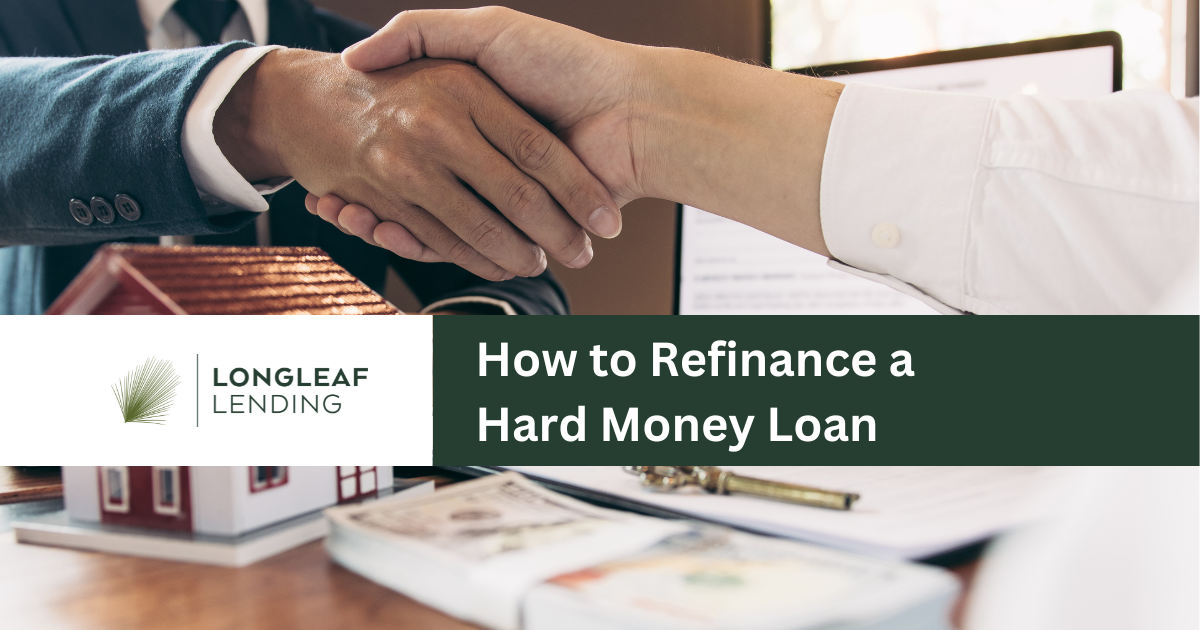
How to Refinance a Hard Money Loan
Hard money loans can be a real estate investor’s best friend. Unlike traditional loans, they’re fast, flexible, and free of hoops to jump through. Without them, building wealth through real estate would be much more challenging.
But there’s a time and a place for everything. And eventually, a hard money loan must be replaced with a longer-term solution. If you plan on holding onto a property and renting it out, that solution is refinancing.
Unfortunately, this isn’t always a straightforward process, so in this guide, we’ll look at how to refinance a hard money loan.
Let’s dive in.
How to qualify for refinancing
Before exploring your different options for refinancing, let’s make sure you qualify.
The exact requirements depend on the type of loan you choose, but they can be broken into two categories.
1. Financial requirements
Refinancing a hard money loan can be more involved than refinancing conventional mortgage loans — especially if you want to refinance a hard money loan with a conventional mortgage.
In that case, you’ll have to go through the entire mortgage process just as you would for buying a new property. That includes meeting your lender’s requirements for credit scores, debt-to-income ratio (DTI), proof of income, employment history — the whole ordeal.
If you originally used a hard money loan because you didn’t meet conventional loan requirements, this can be a problem. Fortunately, some refinancing options have fewer requirements than others.
Lastly, your new lender will want to see the payment history on your hard money loan. If you have a history of late payments, your odds of approval go down the drain.
2. Property requirements
Even if your finances check out, you’re still not in the clear.
The property itself must also qualify for the type of loan you’re applying for. In most cases, that means it can’t be under construction. It must be rent-ready.
Not only that, but most lenders only let you refinance seasoned properties. So even if it’s rental-ready, you still may need to wait six months or more.
Again, there are exceptions to this rule that we’ll cover shortly.
How to refinance hard money loans
The three most common ways to refinance a hard money loan are:
- Conventional bank loans
- Government-backed loans
- Long-term rental loans
Each has unique advantages and disadvantages, so let’s take a closer look.
Conventional bank loans
As mentioned, to refinance with a conventional loan, you need to meet all the typical requirements. These can vary by lender and your unique financial situation, but in general, they include:
- Minimum equity: 20% for cash-out refinance; as little as 5% for rate-and-term refinance
- Mortgage insurance: Required if less than 20% equity
- Credit score: > 620 in most cases
- DTI: < 50%
- Loan amount: $548,250 maximum in 2021, with a few exceptions
- Seasoning for cash-out refinance loan: Six months is standard, but varies by lender and state
Traditional lenders also like to verify your income via W-2s. If you don’t have W-2 income, you have to jump through even more hoops.
Again, these rules aren’t set in stone. But in many cases, refinancing a hard money loan with a traditional mortgage can be challenging.
Banks tend to shy away from risk. And if your investment property doesn’t pass their high standards, you’ll need to refinance elsewhere.
Pros:
- Lower interest rates for those with a strong credit history
Cons:
- Strict property and borrower requirements
- More paperwork
- Longer process
Rental loans
Rental loans are long-term loans designed specifically for real estate investors. They attempt to solve all the problems associated with conventional and government-backed loans.
- You can secure funding in as little as two weeks (rather than two months).
- Private money lenders look for solid investments with strong cash flow. They place less emphasis on your personal qualifications.
- They may waive seasoning requirements if you have a signed lease.
If you’re following the BRRRR method, some hard money lenders can even bundle together a short-term bridge loan with a cash-out refinance into a rental loan. These types of programs save you money on fees and often offer additional incentives.
Requirements vary by lender, but at Longleaf, we like to see:
- Loan-to-value (LTV): 80% maximum
- Credit score: > 660
- Loan amount: $2,000,000 maximum
- Property value: > $100,000
- Debt service coverage ratio: 1.10 minimum
- Seasoning for cash-out refinance loan: own the property for 6 months
Rental loan rates aren’t quite as low as conventional loans, but in many cases, the benefits are worth it — especially if you don’t qualify for any other type of loan.
Pros:
- May approve loans for properties that don’t meet conventional lender standards
- Less paperwork
- Shave months off closing time
- Flexible loan options
- Potentially no seasoning
- No cap on the number of loans
Cons:
- Slightly higher interest rates
If you’re interested in refinancing a hard money loan into a rental loan, we can help. Longleaf rental loans have the most competitive rates in the market, and we can build a custom loan product specific to your needs.
